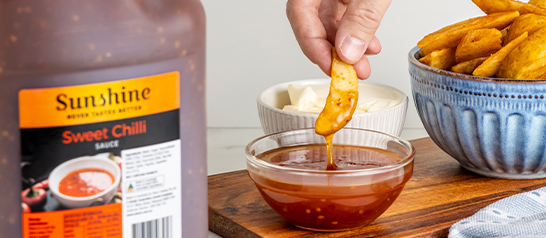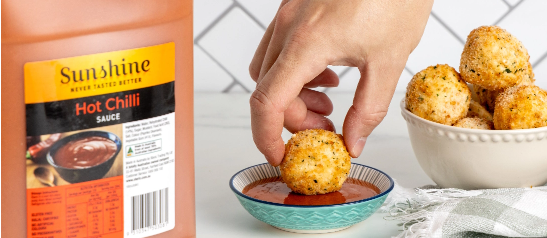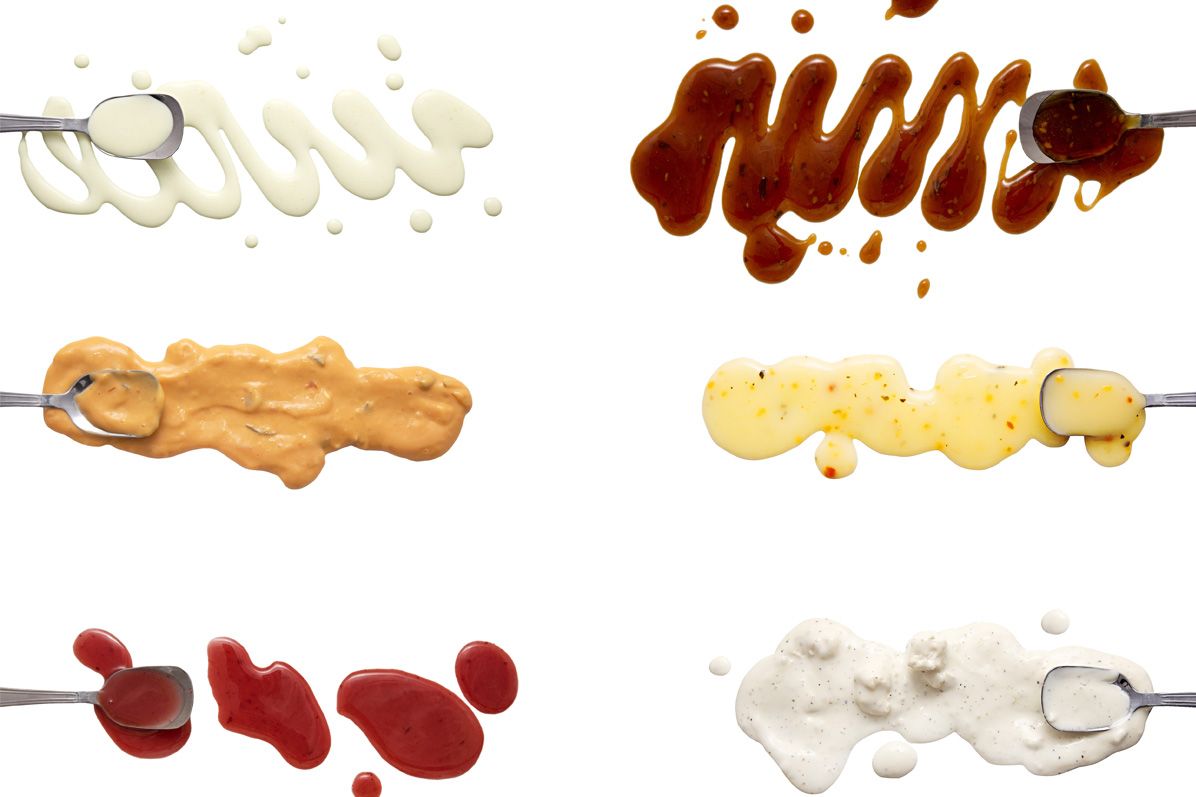All chefs learn about the importance of sauces in a foodservice kitchen during their training. They also learn how to make different sauces, and what sauces go best with which foods. But it’s always worth refreshing the memory of the benefits of using sauce to enhance food.
Sauces have many benefits including adding flavour, adding moisture, improving the appearance of food, adding taste contrast, as well as adding sharpness or tanginess.
In each dish, most sauces have more than one function. For example, in a hamburger, the sauce adds flavour, but it also contributes to the appearance of the food and increases moisture.
In a foodservice kitchen, sauces generally serve one or more of the following functions:
Sauces add flavour
Sauces can add a complementary flavour that will help bring out the essence of that food. They can also be used to heighten the flavour or highlight an aspect of the flavour of the food. Sometimes sauce will also add to the flavour of food.
For example, Steric’s popular Sunshine Tomato Sauce is used by many to enhance the flavour of foods like meat pies and sausage rolls, sausages and sausage sandwiches, hot chips, and more.
Sauces can also provide a major change to the flavour and taste of dishes.
Increase moisture with sauce
Sauces can add moisture or compensate for a drying cooking technique. Some foods that are naturally lean like some cuts of poultry and some fish, benefit from the added moisture sauce can provide.
Some cooking techniques like grilling and sautéing can have a drying effect to food and sauce can provide the missing moisture. Steric’s Plate & Platter Tomato Ketchup was developed to match American-style hamburgers, and while it adds flavour, it also increases the moisture of the burger.
Improve the appearance of food with sauce
Sauces enhance a dish’s appearance by adding lustre and sheen. A coating that is poured or brushed over the food can improve the appearance of an otherwise uninteresting item.
The rich brown sauce that is commonly used in French cooking called demi-glace, serves this exact purpose.
Steric’s Sunshine Sweet Chilli Sauce adds lustre and colour to appetisers in Thai cuisine like spring rolls and curry puffs.
Add contrast with sauce
Sometimes sauces are used to add a contrast in taste to another food instead of complementing it. An example of this is using apple sauce with roast pork.
Sauces can also provide a contrast in colour and texture to add to the visual appeal of the food.
Add sharpness and tanginess with sauce
Some sauces are used to add sharpness or tanginess to otherwise bland foods. For example, a remoulade sauce served with fresh prawns provides sharpness and tanginess. It has a mayonnaise base that is enhanced with Cajun seasoning, whole grain mustard, hot sauce and grated fresh horseradish.
Australian-made sauces from Steric
Steric’s range of Sunshine sauces is manufactured, bottled, packaged, and shipped from Steric’s advanced food manufacturing facility in Western Sydney.
The Sunshine sauce range includes Sweet Chilli Sauce, Hot Chilli Sauce, Hickory Smoked BBQ Sauce, BBQ Sauce, Tomato Sauce, Soy Sauce and Worcestershire Sauce, available in either three or four-litre bottles.
Sunshine and Plate & Platter sauces can be ordered via Steric’s distributors. Contact Steric at https://www.steric.com.au/contact-us/ or 1800 008 155.





